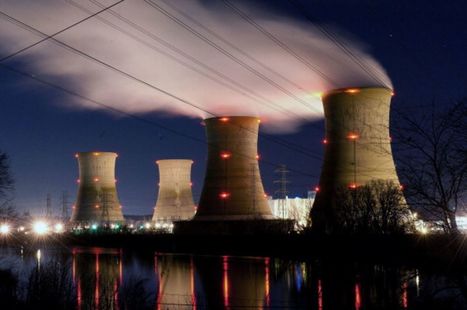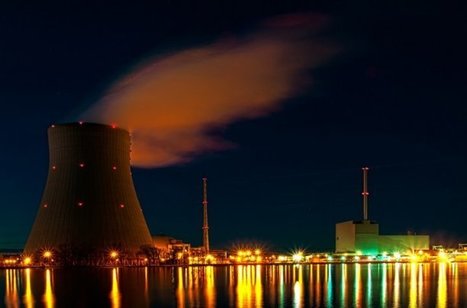For much of my life, I loved the idea of nuclear power. The science was so cool, futuristic and complicated, the power plants so vast and majestic. I devoured science-fiction novels like “Lucifer’s Hammer,” where a plucky nuclear entrepreneur restarts civilization after a comet almost wipes us out. I thought of accidents like Three Mile Island and even Chernobyl as stumbling blocks to a nuclear future.
Then, in 2011, two things happened. First, a tsunami knocked out the nuclear reactor at Fukushima, forcing a mass evacuation and costing Japan hundreds of billions of dollars. Second, I learned that progress in solar power had been a lot faster and steadier than I had realized. I started taking a closer look at whether nuclear was really the future of energy. Now I’m pretty convinced that my youthful fantasies of a nuclear world won’t come true anytime soon.
Safety is part of the problem -- but a much smaller part than most people realize. The Fukushima accident caused an enormous area to be evacuated -- a 12-mile (20-kilometer) radius surrounding the most damaged of the plants, totaling about 160,000 people. But recent research shows that the reaction might have been overdone -- radiation levels for people exposed to the leak was substantially less than many had thought.
Meanwhile, countries are getting better at burying their nuclear waste. Finland is excavating a storage area deep underground that will hold radioactive waste safely for 100,000 years. France, which gets a lot of its energy from nuclear plants, also stores waste deep underground.
So nuclear hazards, while significant, are probably less than many believe. And compared with fossil fuels -- which turn whole cities into toxic deathtraps, foul the atmosphere with gigatons of carbon and can lead to huge oil spills -- nuclear looks downright clean.
The biggest problem with nuclear isn’t safety -- it’s cost. The economics of nuclear are almost certain to keep it a marginal part of the energy mix, especially in the U.S.
Many energy sources involve relatively small upfront costs. To increase solar power, just build more panels. Fracking also has lower fixed costs than traditional oil drilling. But nuclear’s fixed costs are enormous. A new nuclear plant in the U.S. costs about $9 billion to build -- more than 1,000 times as much as a new fracking well, and more than 3,000 times as much as the world’s biggest solar plant.
Raising $9 billion is a daunting obstacle. It’s more money than Apple Inc., the U.S.’s most valuable company, borrowed in 2016. The plucky young entrepreneur raising enough money to build his own nuclear plant in “Lucifer’s Hammer” was pure fantasy; in reality, nuclear plants get built by giant corporations such as General Electric Co. and Toshiba Corp., with huge assistance from the government in the form of loan guarantees.
It’s hard to raise money for projects with giant fixed costs and long horizons for repayment, because they’re inherently risky. If something goes badly wrong with the project, all of that up-front money is lost. If competition makes a project un-economical in five or 10 years in the future, the financiers will take a big loss. It’s very hard to make predictions of more than a few years, especially about competing technologies.
For nuclear power, that’s the main risk -- rapid advances in competing technologies. Solar power is already cheap and is plunging in price, while energy storage is also becoming much more affordable. If these trends continue, a nuclear power plant that’s economical today will be out-competed in a few years. In other words, there will be no way the owner could recover the fixed costs.
What’s worse, nuclear doesn’t look like it’s getting any cheaper. A recent paper by the Breakthrough Institute shows that in most countries, nuclear costs haven’t changed much in recent decades:
Constant or rising nuclear construction costs, matched with dramatically falling solar and storage costs, mean that anyone who ponies up the $9 billion to build a nuclear plant today is taking a gargantuan risk.
Another source of risk is safety -- not the well-known threats of accidents and storage leaks, but the unknown unknowns. If terrorists figure out how to bomb nuclear plants, or hackers find ways to invade their software and cause them to melt down, the destruction could be catastrophic. But no one really knows how likely or remote those threats will be a decade from now. And even if those risks can be prevented, doing so will probably will cause large unanticipated costs.
So nuclear power hasn’t become the futuristic dream technology the old science-fiction novels envisioned. Instead, it’s a huge, risky government-subsidized corporate boondoggle. Someday we may have fusion power or small, cheap fission reactors, and the old dream of nuclear will be realized. But unless one of those breakthrough technologies comes to fruition, nuclear isn’t the power of tomorrow.
This column does not necessarily reflect the opinion of the editorial board or Bloomberg LP and its owners.
To contact the author of this story:
Noah Smith at nsmith150@bloomberg.net
To contact the editor responsible for this story:
James Greiff at jgreiff@bloomberg.net



 Your new post is loading...
Your new post is loading...








